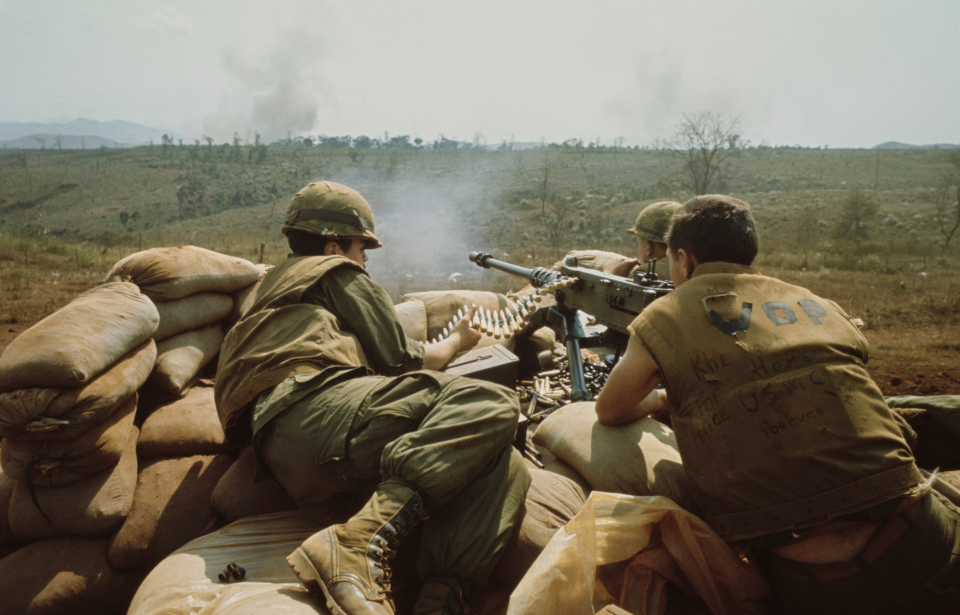The powerful M2 Browning .50 caliber heavy machine gun entered development following orders from Gen. John J. Pershing in World War I, and it has remained a timeless weapon that armies can count on. From World War II to the Russo-Ukrainian War, the M2 delivers the perfect combination of versatility, range and lethal potential.
The M2 Browning .50 caliber is as reliable as it is powerful
According to field surveys, soldiers have rated the M2 Browning .50 caliber among the most effective guns in their arsenal – and for good reason. The heavy machine gun is a belt-fed, closed-bolt, air-cooled weapon with a range of 1,830 meters.
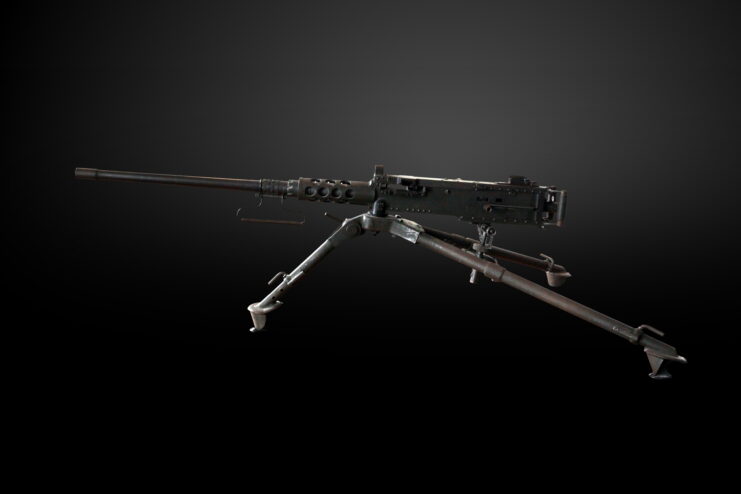
The M2 can fire between 450 and 600 .50 caliber BMG (12.7 x 99 mm NATO) RPM. Its sheer power, combined with the .50 BMG cartridge, makes it a lethal, relentless weapon that’s extremely versatile and effective in both anti-personnel and anti-aircraft scenarios.
The heavy machine gun has been used in countless conflicts throughout history, including the Second World War, in Vietnam and during the war in Afghanistan, and it’s still relied upon today.
100 years of the .50 caliber
Weapons forever changed during WWI. Due to new innovations in armor, aircraft and military vehicles, more powerful guns were needed on the battlefield – specifically, larger-caliber firearms. The commander of the American Expeditionary Force, Gen. John J. Pershing, asked the US Army Ordnance Department to develop a machine gun that could stand up to the heavily-armored German Junkers J.I.
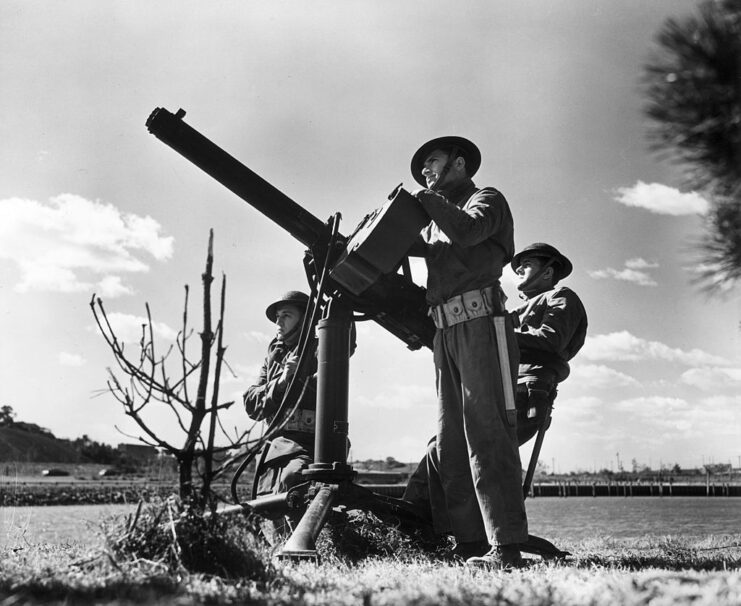
Famed arms designer John Browning went to work remodeling his .30-06 M1917 machine gun to fire a larger round. The new ammunition was designed by Winchester, who originally added a rimmed cartridge for use as an anti-tank rifle. Pershing insisted, however, that the new and improved gun use rimless cartridges.
The very first .50 caliber machine gun began trials in October 1918, one month before the end of WWI. The original model fired less than 500 RPM and had a muzzle velocity of 2,300 FPS, which fell short of the minimum 2,700 needed to penetrate German armor.
Some Americans managed to get their hands on the Mauser M1918 13.2 mm Tankgewehr anti-tank rifle and its ammunition. The rounds required a velocity of 2,700 FPS and could penetrate armor up to one-inch thick, at a range of 230 meters. Winchester used the German ammunition to improve upon its .50 caliber design.
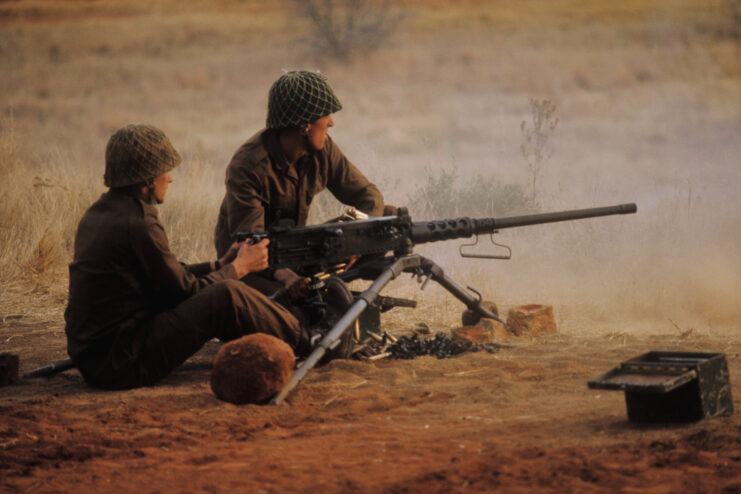
By 1921, Browning debuted the M1921 machine gun. It was water-cooled to keep the barrel from overheating. With the water jacket and cooling system in place, it weighed a whopping 121 pounds, dropping to a still heavy 79 pounds when empty. It wasn’t until the 1930s that the gun was re-branded as the M2.
Several updates were made to the original design, including replacing the water-cooling mechanism with lighter air-cooled options. However, the air-cooled barrel was less effective, and the M2 eventually couldn’t fire more than 75 rounds before overheating.
To remedy the issue, a larger, stronger and bulkier barrel was added, which worked to reduce overheating, but added more weight to the already heavy gun. Later on, a quick-change function was developed to allow the operator to change an overheated barrel with a cool one.
Soon, the M2 Browning .50 caliber became one of the most prolific weapons in the US military’s arsenal. It offered both fixed and flexible mounting options for fighter and bomber aircraft, while also working with vehicles and tanks. It could also be used to provide infantry fire support, and was even used for anti-aircraft support on naval ships.
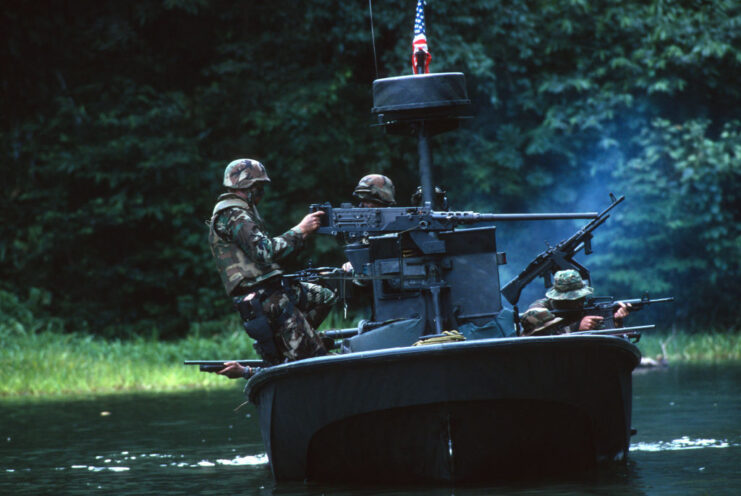
The Allied forces adopted the M2 during WWII. After the conflict, it saw use in Korea and Vietnam. In Vietnam, snipers found the heavy machine gun to be a suitable long-range weapon for combat and modified it with the appropriate hardware. The M2 and its lethal .50 caliber ammunition also saw action during the Falklands War, the Persian Gulf War and in Iraq, among other conflicts.
In 2010, the US Army created the M2A1 designation amid the development of the XM806 program, which was cancelled in 2012. Under the designation, the new and improved M2 features a new flash suppressor, revised bolt assembly, a manual trigger block safety, a quick-change barrel feature and an optional carrying handle.
Currently, pre-existing M2 Brownings are undergoing modifications to meet the new standards of the M2A1.
A lethal encounter
Since the M2 Browning .50 caliber was designed specifically to target armored vehicles and aircraft, the last place anyone wants to be is on the receiving end of one of its bullets. Some believe the M2 is only allowed to be fired toward equipment, but it’s been used in anti-personnel scenarios, as well. Anyone hit with a .50 caliber bullet will suffer severe injuries and most likely death as it rips through the body with incredible speed and force.
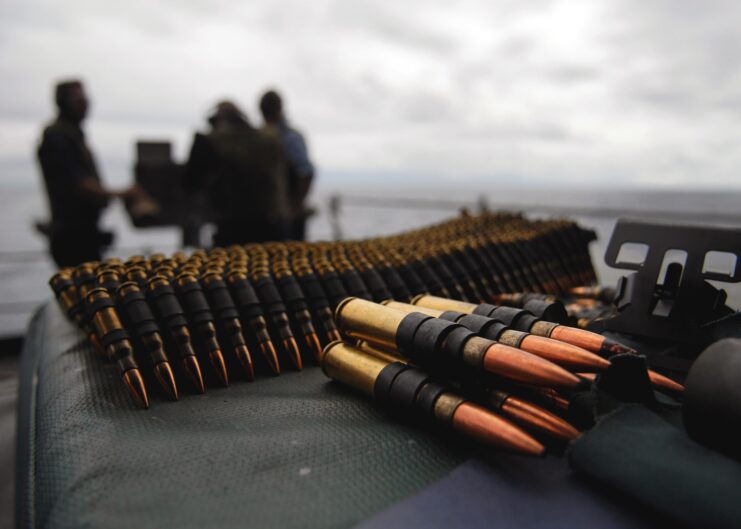
One US Marine was lucky enough to survive the impossible when he was shot with a .50 caliber round at point-blank range in Iraq. Cpl. Jared Foster had served his security detail in Iraq for only a month when he sat down in his tent one night after a fire watch. He heard a weapon discharge, and his tent was suddenly filled with smoke.
Foster initially thought the smoke was from a grenade that had gone off. “Then I looked down because I felt something really cold, and when I lifted my hand up, it had blood all over it,” he recalled. Moments before, an M2 had been fired from five feet behind him, the bullet just missing his spine and exiting through his stomach.
Foster’s comrades rushed to treat the wound. They removed his clothes, only to see his intestines fall out of his body. They told the corporal that he’d been shot with a .50 caliber round, but he didn’t believe it. “Nah, that would rip your head off,” he said shortly before losing consciousness.
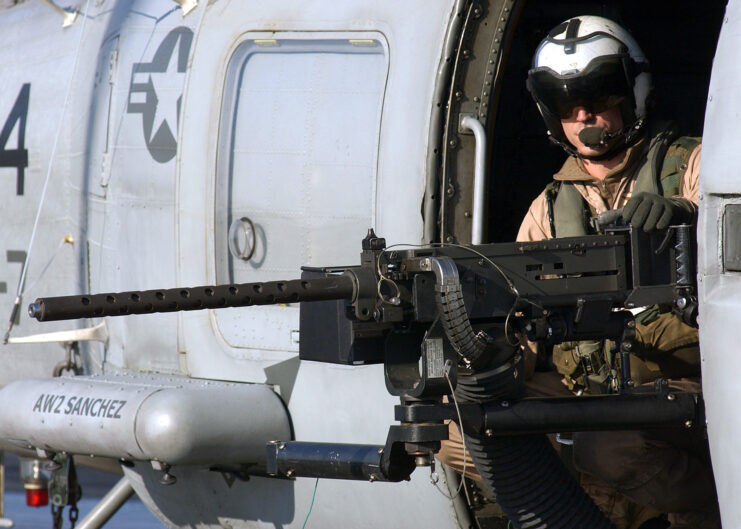
The same bullet that damages aircraft and blasts through concrete should have torn Foster in half, but, somehow, he survived.
“The doctors said they didn’t know if they could save me,” he shared with the Marine Corps Safety Corner. “They didn’t know how to put me back together because they’d never seen anyone shot by a .50-caliber. The hole in my back was huge. But whatever they did worked.”
More from us: M1941 Johnson Light Machine Gun: A Favored Weapon of the Devil’s Brigade
Foster lost his tailbone and suffered severe injuries to his large and small intestines. He was told he would never walk again. However, not only did he survive, but two years after the incident was walking on his own.
